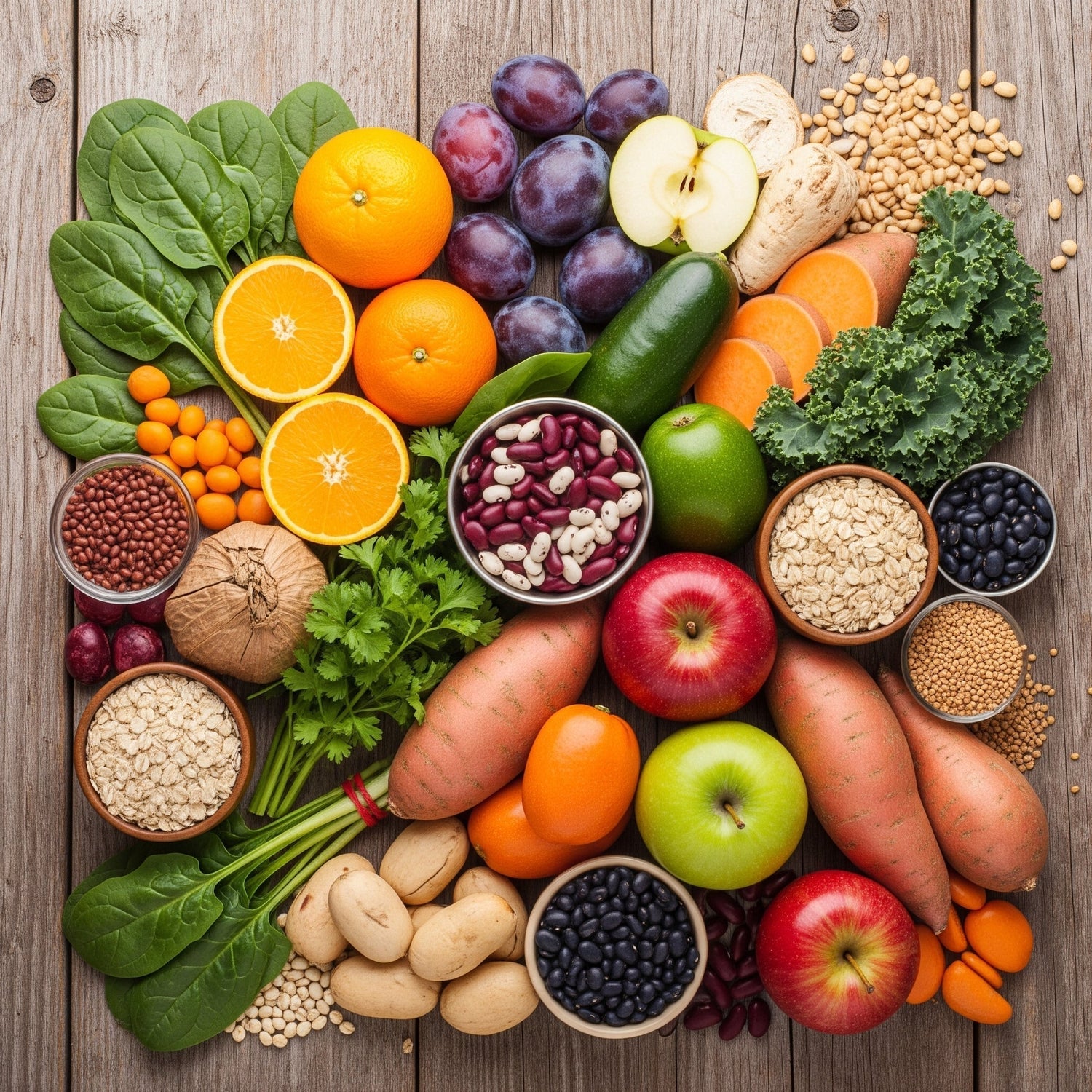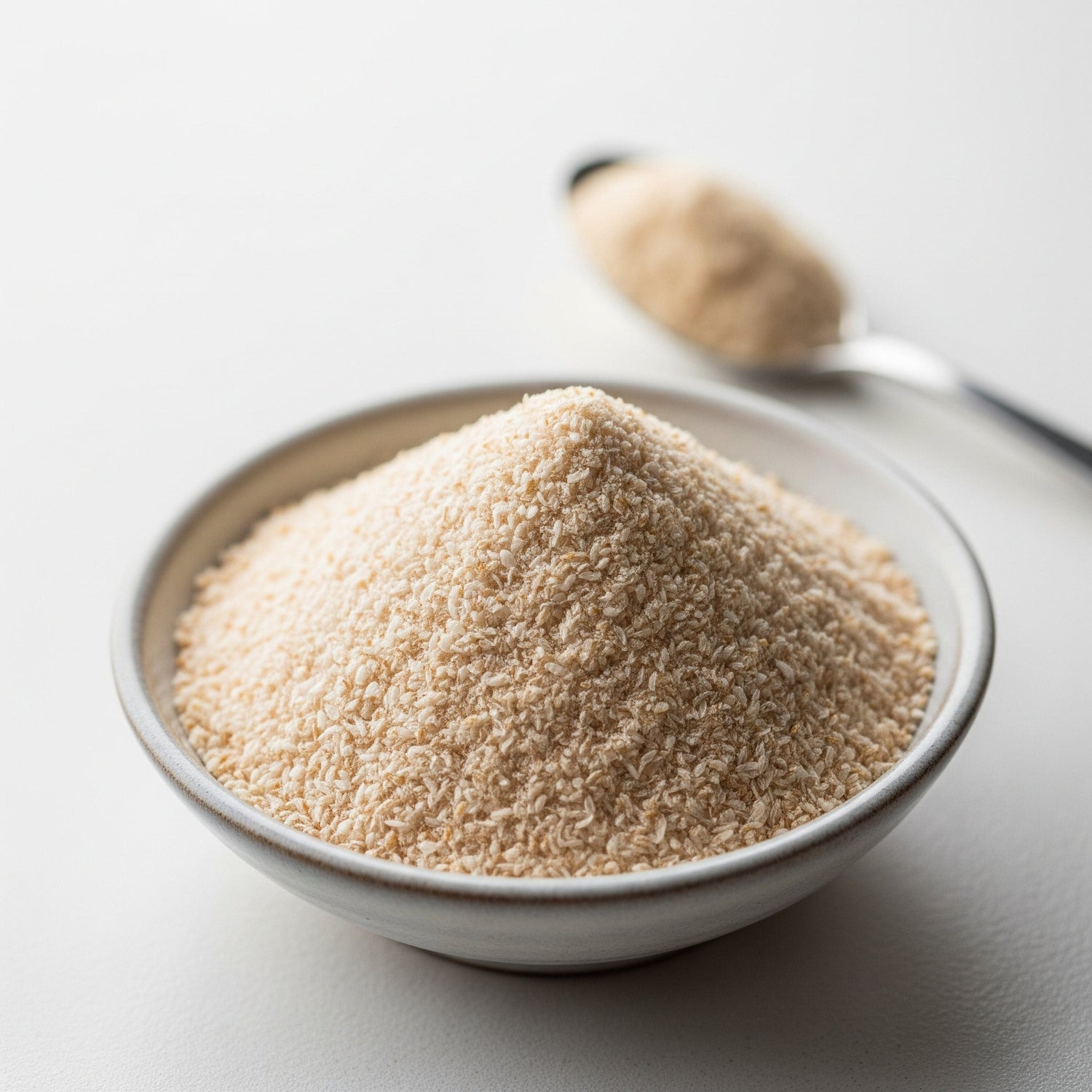Soluble vs. Insoluble Fiber: What’s the Difference and Why It Matters for Your Health
Types of Fiber: The Difference Between Soluble and Insoluble Fiber
Fiber plays an important role in many biological processes in the body, especially those involving digestion, heart health, blood sugar regulation, and weight management. Understanding the types of dietary fiber can help you make informed choices. In simplest terms, fiber can be divided into two main types: soluble fiber and insoluble fiber.
Soluble Fiber
Key qualities of soluble fiber:
- Absorbs water
- Forms a gel-like substance
- Slows digestion
Soluble fiber dissolves in water and forms a gel during digestion, which helps to slow the movement of food through the digestive tract. Naturlax, most notably, contains psyllium husk, a form of soluble fiber. Soluble fibers like psyllium offers several health benefits, including supporting heart health and aiding in blood sugar control [1].
Food Sources of Soluble Fiber
- Grains: Barley, oat bran, oats
- Nuts: Almonds, peanuts, Brazil nuts (primarily insoluble fiber, but with small amounts of soluble fiber) [2]
- Seeds: Flaxseed, sunflower seeds
- Fruits: Apples, pears, strawberries (contain both soluble and insoluble fiber) [3]
- Legumes: Lentils, kidney beans, navy beans (excellent sources of both soluble and insoluble fiber) [1]
Health Benefits of Soluble Fiber
- Heart Health: Soluble fiber can help reduce levels of low-density lipoprotein (LDL), or "bad," cholesterol, thereby lowering the risk of heart disease [1].
- Blood Sugar Control: Soluble fiber slows the absorption of sugar, which can help improve blood sugar levels and lower the risk of type 2 diabetes [1].
- Weight Management: Foods high in soluble fiber promote a feeling of fullness, helping to reduce overall calorie intake and support a healthy weight [4].
Insoluble Fiber
Key qualities of insoluble fiber:
- Does not dissolve in water
- Adds bulk to the stool
- Helps food pass more quickly through the digestive system
Insoluble fiber attracts water into the stool and increases its bulk, which supports regular bowel movements and helps prevent constipation [1].
Food Sources of Insoluble Fiber
- Beans: Kidney beans, pinto beans, navy beans (contain both fiber types, with strong insoluble content) [1]
- Grains: Wheat bran, wheat germ, popcorn
- Vegetables: Green beans, Brussels sprouts, okra
- Fruits: Raspberries, strawberries (both types of fiber) [3]
Health Benefits of Insoluble Fiber
- Digestive Regularity: Helps prevent constipation and promotes bowel regularity [1].
- Bowel Health: May lower the risk of hemorrhoids and diverticulosis, and research suggests that higher fiber intake is associated with a reduced risk of colorectal cancer [4].
- Weight Management: Like soluble fiber, insoluble fiber helps you feel full and satisfied, which can support weight control [4].
Many Foods Contain Both Types of Fiber
In reality, most plant-based foods contain both soluble and insoluble fiber just in different proportions. For example, beans, oats, fruits, vegetables, nuts, and seeds provide a combination of both, which is why a varied, plant-rich diet ensures that you meet your fiber needs.
For a comprehensive look at fiber content in foods, the USDA FoodData Central is an excellent resource [5].
Should You Consider Adding Extra Fiber to Your Diet?
If you have trouble getting enough fiber from food alone, products like psyllium husk powder can help fill the gap. However, most experts recommend getting fiber from whole foods whenever possible, as these also provide important nutrients and antioxidants [1].
Final Tips
When shopping for fiber-rich foods, remember this:
- Soluble fiber helps with cholesterol, blood sugar, and satiety.
- Insoluble fiber supports digestive health and regularity.
- A variety of plant foods will cover both types.
Pro tip: Increase fiber gradually, and drink plenty of water to help fiber do its job effectively [1].
Bon Appétit! Here's to a healthier, fiber-friendly diet!
References
- Mayo Clinic. Dietary Fiber: Essential for a Healthy Diet. https://www.mayoclinic.org/healthy-lifestyle/nutrition-and-healthy-eating/in-depth/fiber/art-20043983
- Harvard T.H. Chan School of Public Health. Fiber. https://www.hsph.harvard.edu/nutritionsource/carbohydrates/fiber/
- Allergy Associates of La Crosse. Strawberry Superfood Profile. https://www.allergychoices.com/strawberry-superfood-profile/
- Cleveland Clinic. Soluble vs. Insoluble Fiber: How to Know What’s Best for You. https://health.clevelandclinic.org/soluble-vs-insoluble-fiber
- USDA FoodData Central. https://fdc.nal.usda.gov/



